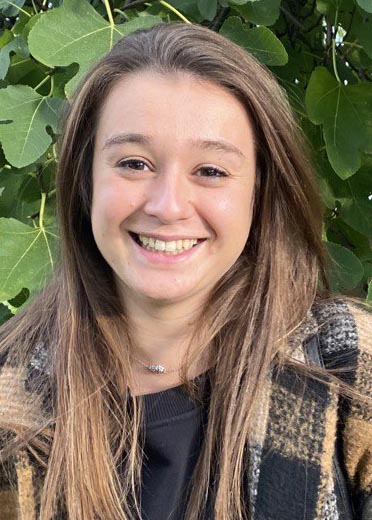Laura Civolani
Laura Civolani is the 2023 recipient of the Brewster Scholarship, which is awarded to an SLS PhD student in their second year of research whose work relates to crop improvement. The scholarship is funded by a generous donation in memory of Dr Jim Brewster, a former member of Wellesbourne staff.
Laura's PhD project title is 'Chloroplast immunity: a neglected mechanism to enhance sustainable agriculture?'.
She is supervised by Professor Murray Grant and Professor Alex Jones.
Project summary
Chloroplast immunity: a neglected mechanism to enhance sustainable agriculture?
Biotic and abiotic stresses cause large losses in crop cultivation, in particular, biotic stress alone can lead to a loss of up to 25% of the yield. For this reason, it is fundamental to develop an approach to restrict pathogen infections to avoid yield and crop losses. Chloroplast immunity represents a new, and previously neglected area in plant immunity. The chloroplast is central to perceiving pathogens (viral, fungal, bacterial, oomycetes) and initiating a rapid defence response. As a consequence, all these diverse pathogens have evolved mechanisms to target the chloroplast, including some of the most devasting pathogens of cereals and fresh produce. Thus understanding how pathogens suppress chloroplast immunity provides a totally novel and potentially universally applicable method. Breakthroughs in mitigating suppression of immunity will provide real opportunities to reduce the use of pesticides, enhance sustainable agriculture and reduce crop losses to phytopathogens.
In the project, we are working with both proteomics and reverse genetics. We are able to look at both “innate” immunity (recognition of non-self) and effector-triggered immunity (ETI) elaborated by the classical plant disease resistance genes. The Grant research group lab is one of the few in the world using a dual non-destructive real-time approach to capture temporal spatial information on chloroplast physiology during the development of disease or activation of defense. The imaging focuses on chlorophyll fluorescence and a unique non-destructive imaging method capturing “biophotons” which are generated from lipid components of the chloroplast during an activated ETI response.

Chlorophyll fluorescence. The analysis measures Fv/Fm, this value represents the maximum yield of Photosystem II. Stresses will damage the Photosystem II resulting with a lower Fv/Fm value. This ratio is now largely used to indicate the level of stress on a plant.
The ultimate goal of the project is to provide the fundamental data for future targeted attempts to modify and engineer chloroplasts in order to make plants more resistant to pathogen manipulation.

